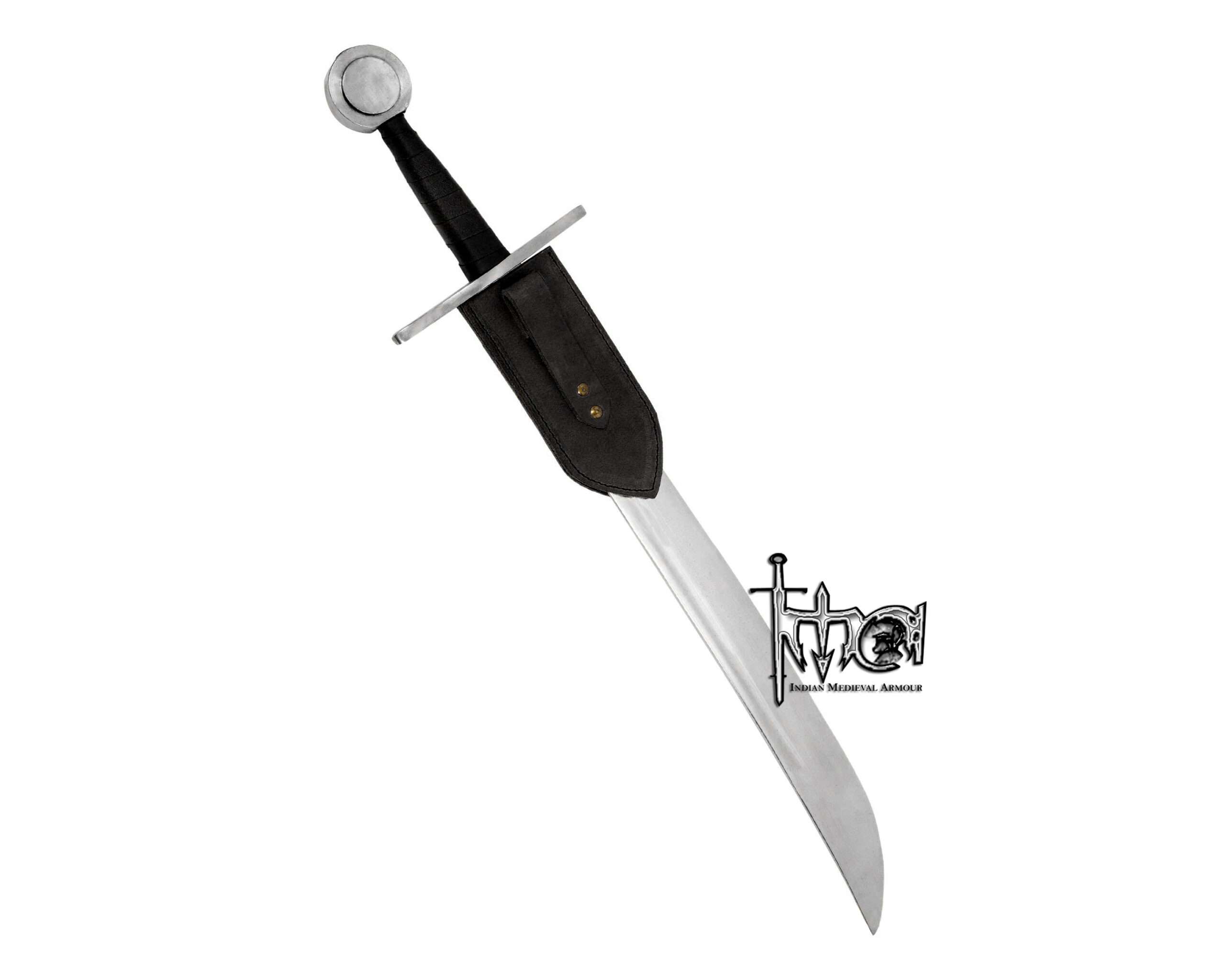Description
Unleashing the Power of the Late Medieval Falchion Sword: A Formidable Weapon of the Middle Ages
Introduction: Welcome to our in-depth exploration of the late medieval falchion sword, a formidable weapon that left its mark on the battlefields of Europe during the Middle Ages. With its distinctive curved blade and remarkable cutting prowess, the falchion was a favored choice among infantrymen seeking to overcome the challenges of armored adversaries. Join us as we delve into the characteristics, history, and significance of this iconic sword.
- The Design and Features of the Late Medieval Falchion Sword: 1.1 Curved Blade: The falchion boasted a single-edged, curved blade that allowed for devastating cutting and slashing strikes. Its design drew inspiration from swords and cleavers, resulting in a versatile weapon capable of delivering powerful blows.
1.2 Broad and Tapering Blade: The falchion’s blade featured a width that gradually increased from the hilt towards the tip, providing a greater cutting surface and enhancing its armor-piercing capabilities.
1.3 Hilt and Grip: The falchion’s hilt typically comprised a simple crossguard and a pommel, often exhibiting a combination of practicality and elegance. The grip, commonly made of wood, bone, or horn, was often wrapped with leather or cord to enhance the wielder’s control.
- Function and Usage of the Late Medieval Falchion Sword: 2.1 Infantry Weapon: The falchion was primarily used by foot soldiers, who relied on its cutting power to defeat opponents in close-quarters combat. Its broad blade and curved shape allowed for effective strikes against armored adversaries, as it could cleave through mail or plate armor.
2.2 Battle Versatility: With its ability to deliver devastating cuts, the falchion excelled at hacking through limbs, rendering opponents defenseless or disabling them. Its curved blade also facilitated powerful slashing movements, making it an ideal weapon for disarming foes or causing significant damage.
- Historical Significance and Regional Variations: 3.1 European Influence: The falchion gained prominence during the 13th century and remained popular until the 16th century. It was predominantly used in Europe, where various regions developed their own unique variations of the sword.
3.2 English and German Variations: Notable variations include the broader-bladed English falchion, favored for its cutting ability, and the more slender and curved German falchion, renowned for its maneuverability and effectiveness against armor.
Conclusion: The late medieval falchion sword stands as a testament to the ingenuity and craftsmanship of weapons during the Middle Ages. With its curved blade, remarkable cutting power, and historical significance, the falchion remains an intriguing piece of weaponry that has left a lasting impression on the annals of medieval warfare.































Reviews
There are no reviews yet.